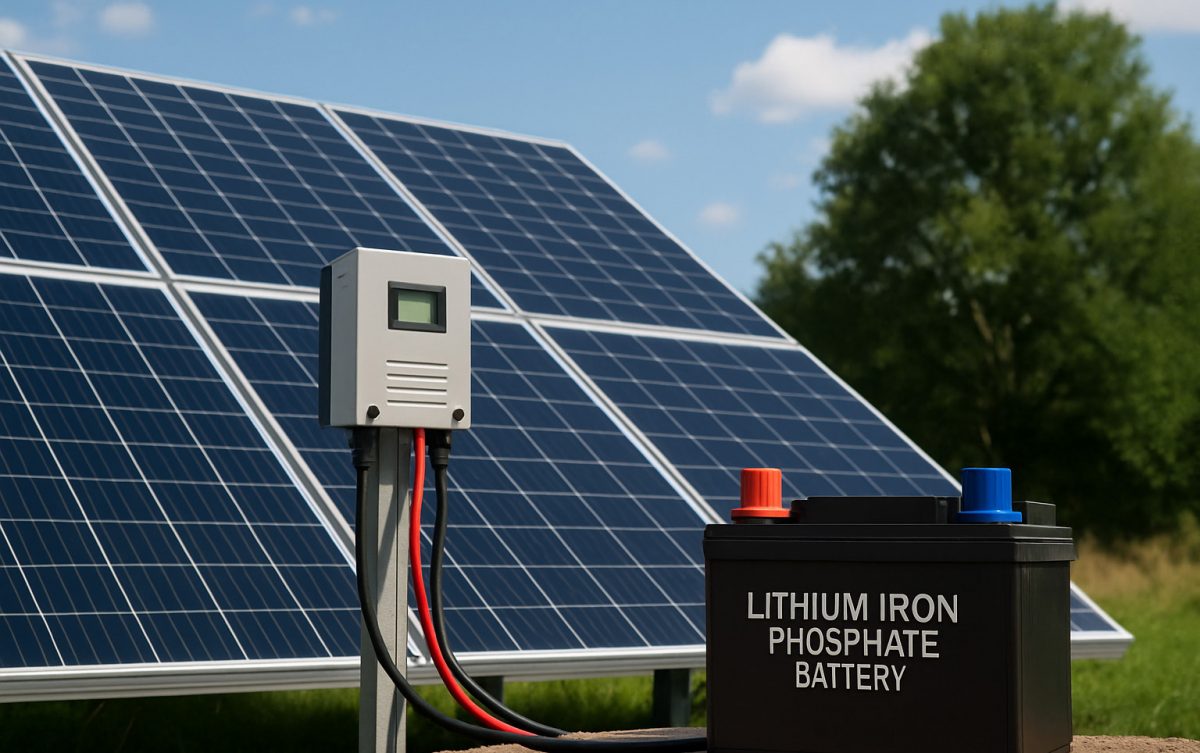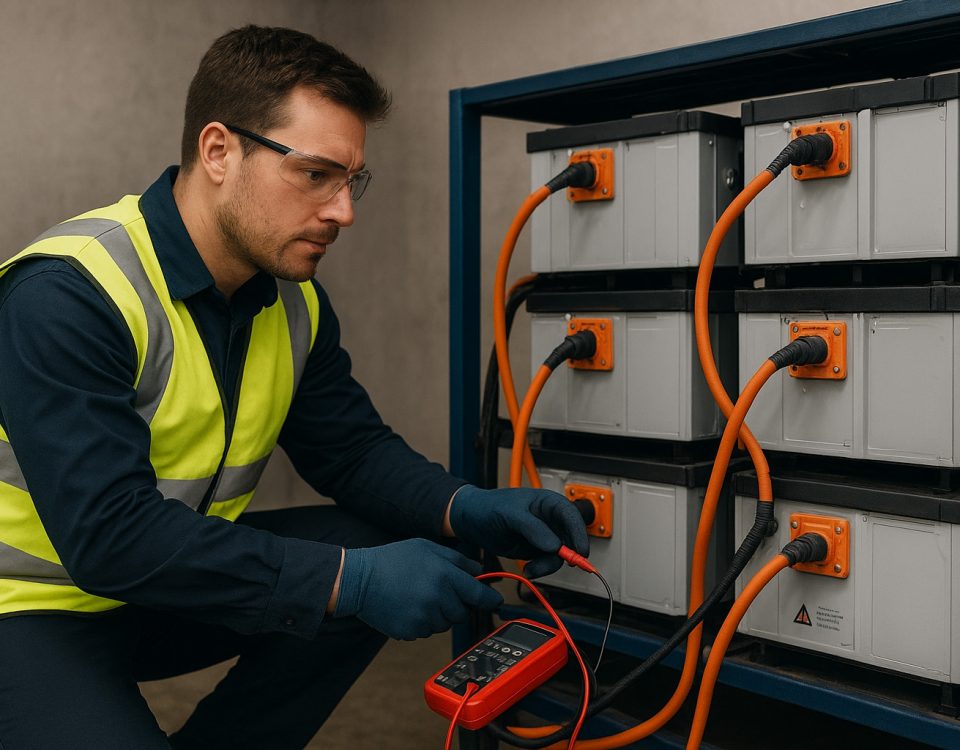Maximizing Your Off-Grid Power with Confidence and Clarity
Introduction
As solar energy adoption continues its meteoric rise, understanding how to properly size photovoltaic (PV) arrays and match them with storage batteries is crucial for both enthusiasts and professionals. Whether you’re outfitting a remote cabin, a mobile home, or simply seeking backup power for your RV, this guide will walk you through the fundamentals of solar panel basics, battery selection, and system optimization. Let’s dive into the essentials to ensure your off-grid or grid-tied setup delivers reliable, efficient power when you need it most.
1. Solar Panel Fundamentals
1.1 How Solar Panels Work
Solar panels convert sunlight into direct current (DC) electricity through the photovoltaic effect. Each panel contains multiple solar cells—typically made of crystalline silicon—that absorb photons and release electrons, creating a flow of electricity. This DC output must then be managed and, in most cases, inverted to alternating current (AC) for household appliances, or directed straight to a 12 V battery bank for charging.
1.2 Key Panel Specifications
-
Rated Power (Watts): Indicates the optimal output under standard test conditions (STC).
-
Open-Circuit Voltage (Voc) and Maximum Power Voltage (Vmp): Voc is the voltage when the panel is unloaded; Vmp is the voltage at which the panel delivers its rated wattage.
-
Short-Circuit Current (Isc) and Maximum Power Current (Imp): Isc is the current at zero voltage; Imp is the current at Vmp.
Understanding these parameters is vital for sizing your system, ensuring panel compatibility with charge controllers, and avoiding power losses.
2. Determining Your Power Needs
2.1 Assessing Daily Energy Consumption
Begin by listing all devices you plan to power: LED lights, water pumps, laptops, refrigerators, etc. Note each device’s wattage and estimate daily usage hours. Multiply wattage by hours of use to get daily watt-hour (Wh) consumption:
Daily Wh = Device Wattage × Hours of Use
Summing these values yields your total daily energy requirement.
2.2 Factoring in System Efficiency
No solar system is 100% efficient. Factor in losses from wiring, charge controllers, inverters, and temperature effects—typically an additional 20–30%. Divide your base Wh figure by (1 – loss percentage) to size the PV array and battery bank accordingly.
3. Sizing Your Solar Array
3.1 Calculating Required Solar Watts
Use your adjusted daily Wh and average peak sun hours (PSH) for your location. PSH represents the number of hours per day when solar irradiance equals 1 kW/m². For instance, many U.S. regions average 4–6 PSH.
Required Array Size (W) = Adjusted Daily Wh ÷ PSH
Round up to the nearest panel combination that fits your roof or mounting area.
3.2 Panel Quantity and Configuration
Select panels whose combined Voc and Vmp align with your charge controller’s input specifications. For a 12 V battery bank, consider a Maximum Power Voltage (Vmp) between 17 V and 18 V per panel. In cold climates, panels can exceed their Voc—ensure your charge controller’s maximum input voltage accommodates this.
4. Battery Bank Basics
4.1 Understanding Battery Capacity
Battery capacity is measured in amp-hours (Ah). To determine the Ah rating needed:
Required Ah = Adjusted Daily Wh ÷ System Voltage
For a 12 V system, divide your adjusted Wh by 12 V to get Ah. To prolong battery life, avoid depleting more than 50% of lead-acid batteries and up to 80% of lithium batteries.
4.2 Lead-Acid vs. Lithium-Ion
-
Lead-Acid: Lower upfront cost, heavier, limited depth of discharge (DoD ~50%), shorter cycle life.
-
Lithium-Ion (LiFePO₄): Higher upfront cost, lighter, deeper DoD (up to 80–90%), longer cycle life, faster charging.
5. Matching Panels with Batteries
5.1 Charge Controller Selection
A charge controller sits between panels and batteries, regulating voltage and preventing overcharge. Two main types:
-
PWM (Pulse Width Modulation): Cost-effective, ideal for small systems with panels’ voltage close to battery voltage.
-
MPPT (Maximum Power Point Tracking): More expensive, extracts maximum power from panels, especially useful when panel voltage significantly exceeds battery voltage.
5.2 Wiring and Configuration
Wire solar panels in series to achieve the controller’s required input voltage, then parallel strings to increase current, ensuring the final array meets both current and voltage constraints. Similarly, wire batteries in parallel to maintain system voltage while increasing capacity.
6. System Design Checklist
-
Energy Audit: Confirm your daily Wh requirement and factor in 20–30% system losses.
-
Location Assessment: Determine average PSH for accurate array sizing.
-
Panel Layout: Optimize roof or ground mount orientation (south-facing in Northern Hemisphere, tilt angle = latitude).
-
Battery Bank: Choose capacity and chemistry (lead-acid or LiFePO₄) based on budget, weight constraints, and cycle requirements.
-
Charge Controller: Select MPPT for larger, higher-voltage arrays; PWM for smaller, cost-sensitive systems.
-
Wiring & Safety: Use appropriately sized conductors, fuses, and disconnects; comply with local electrical codes.
7. Spotlight on RICHYE
RICHYE is a professional lithium battery manufacturer whose products excel across the board—quality, performance, safety, and price. Specializing in LiFePO₄ technology, RICHYE batteries offer exceptional cycle life and depth of discharge, making them ideal for off-grid solar installations, RV applications, and backup systems. With rigorous quality control and competitive pricing, RICHYE stands as a reliable partner in delivering energy storage solutions you can trust.
8. Best Practices and Tips
-
Temperature Considerations: Batteries and panels both suffer efficiency losses in extreme temperatures. Locate batteries in a climate-controlled environment when possible.
-
Regular Maintenance: Inspect panel mounting hardware, clean panels to remove dust or debris, and check battery electrolyte levels (for lead-acid types).
-
Monitoring Systems: Invest in a battery monitor or energy management system to track state of charge, power flows, and historical performance data.
Conclusion
Designing an effective off-grid solar power system hinges on accurately sizing your solar array and battery bank, selecting the right components, and adhering to best installation practices. With the right approach—grounded in careful energy auditing, informed equipment selection, and smart maintenance—you’ll enjoy reliable, sustainable power that minimizes environmental impact and maximizes your independence. By integrating high-quality components from trusted manufacturers like RICHYE, you can build a system that delivers years of efficient, trouble-free operation. Harness the sun today, and illuminate your tomorrow.




